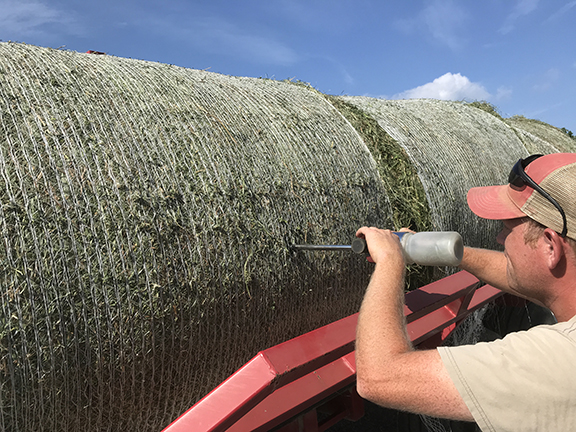What a year it has been so far! Was there mud as livestock were fed this past winter? Did winter-damaged alfalfa fields occur and did pastures where livestock spent the winter look like a mud volleyball tournament had been played? What about delayed seedings or fields where Prevent Planted acres were declared? And what about harvesting hay for the first time in late June or as Independence Day was being celebrated? One thing in common about all of these matters is that there was little control over them.
What about the first time harvested cool-season grasses and legumes in late June or early July? Forage quality is going to be impacted in a big way. Protein levels will be lower and fiber levels will be higher. Forage intake and digestibility will be compromised. If livestock producers don’t take control of the matter, there will be livestock losing body condition as the winter progresses. Severe loss of body condition will impact offspring and reproduction. It doesn’t need to be this way. What should be done? Sample, test, allocate and balance.
Sample – Detailed information about sampling hay and silage can be found at the website www.foragetesting.org. A sample will be from a field of similar forages and harvested within a day having similar environmental conditions. Collecting a representative hay sample will require use of a hay probe. Many Purdue Extension offices have a hay probe that can be loaned for collecting a sample. At least twenty probings will comprise a sample. For large round bales, take a probing on each side of the circumference of the bale from each of ten bales. From each of twenty small rectangular bales, take one probing on a butt end. If large rectangular bales are being used, take a probing on each butt end from ten bales. If baleage is being sampled, tape the hole made by the probe with repair tape from a plastic wrap provider. Do not use duct tape. Immediately, place the probings in a ziplock plastic bag and identify the forage types, date of harvest, and identification words (example: alfalfa-orchardgrass, 30 percent alfalfa, 6/28/19, 20 acres north of barn). As you sample the bales, do a sensory analysis of each hay type and record this information for later referral, too (examples: musty, moldy, trace of Canada thistle, poor leaf retention).
Test – Send the samples, preferably, to a certified testing laboratory. These laboratories are listed at www.foragetesting.org. A basic test would include moisture, protein, adjusted crude protein, acid detergent fiber, neutral detergent fiber, and minerals. Each laboratory will have their own submission sheets that need to be filled out and included with the samples when shipped or delivered. A reasonable fee will be assessed. Analyses will likely be completed and results received within ten days.
Allocate – When results from all hay and silage samples are returned, arrange results from low to high forage quality. Use Relative Feed Value or Relative Forage Quality terms as a starting point to arrange the results. Higher quality hay or silage would be best allocated for use when livestock are lactating and need higher forage quality as compared to mid-gestation when nutritional requirements are less.
Balance – To get the most from the time taken to sample and test the forages, it is important to enlist the help of a trained livestock nutritionist that can fine tune rations with the addition of protein, energy and/or mineral supplements along with the hay and silage being fed. Purdue Extension Specialists and Educators trained in animal nutrition as their specialty, feed company personnel, and livestock nutrition consultants can be helpful in balancing rations for different classes of livestock.
Forage testing is a “Best Management Practice every year”. But, with the very common late first-harvest of hay and silage in 2019, it is a necessity to analyze forages this fall so proper supplementation can occur. Being proactive and wise will keep livestock in good condition.

Proper sampling of hay with a forage probe is the first step in using test results to develop rations that will keep livestock in excellent body condition during the winter.
Initially published in the Indiana Forage Council Newsletter, September 2019.


